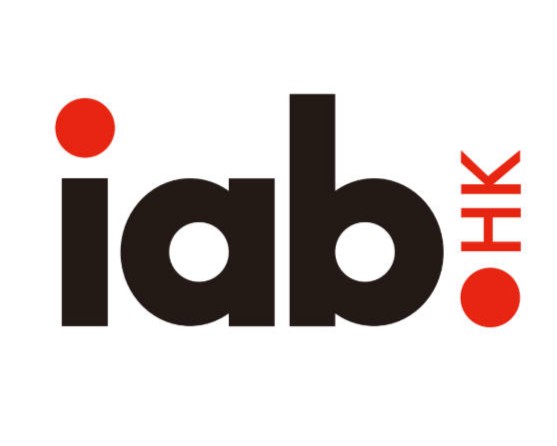Unlocking the Potential of Programmatic DOOH Advertising
The Fusion of Programmatic and DOOH
Programmatic online advertising empowers marketers to precisely reach their target audiences at scale, minimizing wasted spend through advanced targeting, precision, and bidding tactics. DOOH advertising stands out with its strategically placed, virtually unmissable screens that offer immense creative potential.
Today’s technology allows marketers to harness the precision of programmatic advertising and the high-impact formats of DOOH. However, combining these elements effectively requires a deep understanding of both.
The 3 Key Benefits to Programmatic DOOH
In most markets such as Hong Kong with numerous DOOH media owners, programmatic is one effective means to consolidate all DOOH media buying onto one platform. And taking it a step further, programmatic can even integrate other channels of media buying, including Display, Mobile, Connected TV and of course, DOOH, into one pipe, with the added flexibility to manage spending and pacing, inter and intra channels, based on results of their performances.
While the consolidation of media inputs and a one-stop management platform mentioned above is the first key benefit to Programmatic DOOH, the campaign manager’s ability to see all channels outcomes in one place is its second key benefit. As a result, correlations of outcomes between channels can be more easily revealed, which leads to the possibility to optimize between channels on the fly, which was impossible prior to the introduction of programmatic.
Lastly, as businesses are becoming increasingly more international, the very global nature of programmatic advertising fits this growing trend wonderfully. Managers can now manage cross-market campaigns, on one platform, for multiple channels, and multiple DOOH outlets.
Essential Elements for Successful pDOOH Campaigns
Crafting a Brilliant Brief
A well-crafted brief is the foundation of a successful pDOOH campaign. It should clearly outline your objectives, resources, and media mix. Key considerations include:
- Objectives: Define your goals—sales, footfall, brand awareness, or something else.
- Target Audience: Identify who you want to reach, where, and when.
- Creative Strategy: Decide whether to adapt existing ads or create bespoke pDOOH content.
- Budget: Establish your financial parameters.
- DSP Selection: Choose between a specialist pDOOH DSP or an omnichannel DSP.
- Campaign Timing: Determine your campaign schedule.
- Media Mix: Coordinate with other active marketing channels.
Navigating Technology and Data
Understanding the technology and data landscape is crucial. Here’s a simplified buying process:
- Supply-Side Platform (SSP): Media owners list impressions.
- Demand-Side Platform (DSP): Buyers create deals based on targeting and budget.
- Ad Opportunity: SSPs share ad opportunities with DSPs.
- Bid Submission: DSPs bid on matching opportunities.
- Ad Display: The winning bid’s creative is shown.
Selecting the Right DSP
Choose a DSP based on your campaign goals and existing tech stack. Seek advice from media agencies, media owners, and consultants if needed. Consider incorporating first-, second-, or third-party data into your DSP criteria.
Creating Effective pDOOH Campaigns
Best Practices for Creative
For effective pDOOH campaigns, stick to one concise message, use short copy, and ensure high visual impact. The integration of 3D creative elements into pDOOH campaigns is revolutionizing the way brands capture audience attention. 3D creative provides a dynamic, immersive experience that stands out in the crowded advertising landscape.
DOOH Creative Production Options
Repurpose Display Assets - By leveraging repurposing techniques, you can transform your display assets to captivate audiences across DOOH placements. Such as in the case of using Gen AI. Subtle motion created with Gen AI can be a powerful tool for animating static assets in your ads.

Powering up Your Ads: Public & 1st-Party API Feeds for Creatives
Marketers can craft highly personalized and impactful ads with the following 3 levels of data feeds, allowing for dynamic creative changes based on real-time triggers:
Data Feeds
- Weather Conditions: Integrate weather APIs with your DSP to automatically change the ad content based on current weather conditions.
- Use case: On a hot day, a beverage brand can display ads promoting cold drinks, while on a rainy day, they might switch to promoting hot beverages.
- Time of Day and Day of Week: Schedule ads within your DSP to change based on the time of day or day of the week, ensuring the content is always relevant.
- Use case: A fast-food chain can advertise breakfast items in the morning and dinner specials in the evening.
- Location-Based Targeting: Use geofencing and location data to tailor ads for specific geographic areas, ensuring the content is relevant to the local audience.
- Use case: A retail store displays different promotions in different locations, highlighting location-specific discounts.
- Audience Demographics and Behavior: Utilize data on audience demographics and behavior patterns to dynamically adjust the content shown to different segments.
- Use case: A fitness brand might show different ads to young adults and middle-aged consumers, tailoring the message to align with their interests.

Examples of Dynamic Creative showing city names based on where the DOOH ad appears (left) and time to the nearest store based on the closet store from the DOOH billboard (right).
Public Feeds
- Sports scores and Financial Market Traffic: Integrate real-time data feeds from sports, news, or social media to adapt your ad content to current events and trending topics.
- Use case: During a major sports event, a brand can display ads featuring live scores or promoting products related to the event.
First-Party Feeds
- Stock Levels and Sales Trends: Connect your inventory management system with your DSP to automatically update ads based on real-time stock levels and sales data.
- Use case: A fashion retailer can promote items that are in high stock or currently trending, avoiding the promotion of out-of-stock products.
The 3/ 7/ 10 Golden Rule for DOOH Creative

Benefits of Dynamic Content Optimization
- Increased Relevance: By tailoring ads to the specific context and preferences of the audience, DCO ensures higher engagement and effectiveness.
- Improved Performance: Ads that resonate more with viewers lead to better performance metrics such as higher click-through rates, increased footfall, and improved sales.
- Enhanced Flexibility: The ability to change ad content in real-time allows marketers to be agile and responsive to changing conditions and opportunities.
- Cost Efficiency: By optimizing ad content dynamically, marketers can reduce wasted impressions and maximize the return on investment.
Measurement and Optimization
Evaluating Performance
pDOOH allows for near real-time optimization. Focus on metrics aligned with your goals, such as:
- Reach
- Online Sales Uplift
- Footfall/Offline Sales Increase
- Performance of Other Channels
- Search Volume Increase
- Social Sharing
Real-Time Adjustments
Monitor your campaign’s performance regularly. Identify high-performing deals and increase spending there, while pausing and adjusting underperforming ones. Consider the appropriate timeframe for evaluation based on your sales cycle and data availability.
Maximizing pDOOH Campaigns
Achieving and Exceeding Goals
Track your progress against targets. Once KPIs are met, consider turning off the campaign or exploring new tactics for even greater success. For advanced strategies, refer to our guide on testing and learning.
Authors:
| Jimmy Poon | Ray Lee |
| Head of Sales & Business Development, Blis Media HK | General Manager, JCDecaux Transport HK |
 |
Article launched on 11/11/2024
APPENDIX
About the IAB (Hong Kong)
The Interactive Advertising Bureau (Hong Kong) empowers the media and marketing industries in Hong Kong, to thrive in the digital economy. It is comprised of more than 100 leading media and technology companies that are responsible for selling, delivering, and optimizing digital campaigns. Working with its member companies, the IAB (Hong Kong) evaluates and recommends standards and practices and fields critical research on interactive advertising.
The IAB (Hong Kong) Programmatic Advertising Committee
The Programmatic Advertising Committee is focused on evaluating the value and potential of Programmatic Advertising. This includes evaluation of the programmatic advertising ecosystem and terminology, disclosure principles, ad performance evaluation, opportunities/obstacles by platform, scalable/custom solutions, consumer perceptions, messaging and more.
Please address any questions or comments about this blog to
Alvina Chan, Secretariat Office, IAB (Hong Kong) - alvina.chan@iabhongkong.com


